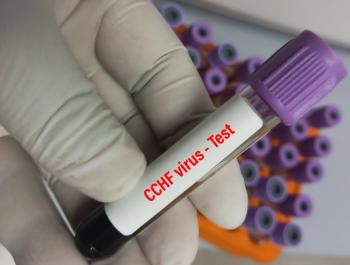
Navigating Research Disruptions: The Impact of NIH Grant Terminations and the Pharmacist’s Expanding Role
Key Takeaways
- The "One Big Beautiful Bill Act" will cut over $1 trillion from health programs, affecting millions and increasing uncompensated care by $278 billion.
- NIH's termination of over $2 billion in research grants has disrupted 3.5% of clinical trials, affecting over 74,000 participants.
Research funding disruptions at the National Institutes of Health (NIH) impact clinical trials, threatening treatment options for patients and highlighting the critical role of pharmacists in care continuity.
Clinical trials are the primary mechanism for evaluating medical interventions but are rather resource intensive. About 1 in 30 clinical trials and over 74,000 trial participants were affected by grant funding disruptions, according to authors of research published in JAMA Internal Medicine.1
Background on 2025 Policy Changes, Passed Legislation
In 2025, health care and research have witnessed a plethora of changes. For example, “the One Big Beautiful Bill Act” was passed into law over the summer, a legislation slated to cut more than $1 trillion from health programs over the next 10 years and will result in more than 10 million people losing health care coverage. An additional 5 million individuals are expected to lose coverage when financial assistance for individuals with Affordable Care Act (ACA) marketplace plans to expire at the end of 2025.
In addition to cutting hundreds of billions of dollars of revenue for hospital services, it is also projected that uncompensated care will increase by as much as $278 billion during the same period. Curtis E. Haas, PharmD, FCCP, chief pharmacy officer for the University of Rochester Medical Center in New York, anticipates the impact will be felt most severely in Medicaid expansion states and in rural and urban areas with underserved populations. Hundreds of rural hospitals are expected to be at risk of closure due to changes under the “the One Big Beautiful Bill Act” and the expiration of ACA subsidies.2
Further, public health research has shown that loss of health care access can lead to delays in diagnosis and treatment of acute health care needs, leading to later presentation with chronic and more costly health care needs. Health systems in every setting will face greater financial distress and will likely need to cut back services, consider workforce reductions, and make other difficult decisions to remain afloat.2
What Was the Goal of the Study?
According to CBS News, the NIH is the largest funder of biomedical research, and the NIH canceled over $2 billion in federal research grants earlier this year as part of the Trump administration's and the Department of Government Efficiency’s efforts to downsize the federal government. Additionally, agency spending has been slowed, and about 1300 employees have been fired. Thousands of universities and US institutions rely on NIH funding for their research.3
“Clinical trials are very expensive to conduct, which is likely why they are a focal point of cost reduction related to grant funding,” associated editor of the Pharmacy Practice in Focus: Health Systems Editorial Advisory Board Jacinda Abdul-Mutakabbir, PharmD, MPH, AAHIVP, assistant professor of clinical pharmacy, Division of Clinical Pharmacy, Skaggs School of Pharmacy and Pharmaceutical Sciences, Division of the Black Diaspora and African American Studies, University of California San Diego, said in an email correspondence. “For many patients, the clinical trials may be a last-ditch effort for their particular disease state. Thus, the discontinuation of that trial may result in them no longer being able to treat that illness. That may result in the mental instability, reverberating familial impacts, and in some of the direst cases, mortality due to disease worsening.”
Amid these changes and predicted outcomes, the authors of the JAMA Internal Medicine aimed to identify exactly how research was affected by the unprecedented number of terminated research grants at the National Institutes of Health (NIH). For this reason, the investigators conducted a cross-sectional study using NIH ExPORTER4 to identify all NIH-funded interventional clinical trials supported by active grants from February 28, 2025, to the date of the first reported grant termination. Grants terminated since this date were identified using the US Department of Health and Human Services Tracking Accountability in Government Grants System. Trial characteristics (e.g., anticipated enrollment, participant age eligibility, trial location, primary purpose, intervention type, phase, and primary condition) were obtained from the NIH clinical trial database. Primary conditions were then categorized into broad disease groupings.
The investigators summarized the number of trials with terminated grants and calculated the proportion of affected trials among those with previously active NIH funding, by trial status at time of grant termination and by trial characteristics.1
Study Results
The authors identified 11,008 clinical trials funded by NIH grants from February 28, 2025, and August 15, 2025, of which about 3.5% (n = 383) subsequently lost grant funding. Among these affected trials, the status at the time of termination included completed (36.1% [n = 140]), recruiting (34.5% [n = 134]), not yet recruiting (13.7% [n = 53]), active and not recruiting (11.1% [n = 43]), and enrolling by invitation (3.4% [n = 13]). The median anticipated enrollment was higher for trials affected by terminated funding (105 [IQR, 30–402]) than for those with retained funding (72 [IQR, 31–220]). For trials classified as active and not recruiting at the time of funding termination, where participants may have been in the process of receiving interventions, a total of 74,311 individuals had been enrolled.1
Further, trials conducted outside of the US were disproportionately affected by terminated funding (5.8% [28 of 483]) compared with US-based trials (3.4% [355 of 10 525; P = .009). The proportion of grant terminations significantly differed by region among US-based trials ranged from 6.3% (189 of 2998) in the Northeast to 0 for multiregional trials (P < .001 for group difference).1
Grant terminations also differed by primary purpose, from 8.4% (123 of 1460) for prevention trials to 2.0% (16 of 791) for basic science trials (P < .001). By intervention type, terminated funding ranged from 5.0% (177 of 3510) for trials with behavioral interventions to 0 for genetic interventions (P < .001), and by trial phase, grant terminations ranged from 3.7% for phase 1 (60 of 1611) and phase 1 to 2 (17 of 461) to 0 for phase 2 to 3 (P < .001). Trials affected by terminated grants differed by primary condition, from 14.4% (97 of 675) for infectious disease trials to 2.2% for neurologic (11 of 498) and reproductive health trials (48 of 2161; P < .001).1
“Randomized control trials (RCTs) are the gold standard for medical research. This is because this type of study design removes a lot of opportunities for the confounding and biasing of results and allows for us to establish causality due to its randomized nature and the ability to randomly assign exposure. [This means] the findings are highly trustworthy, and we use those findings to identify the placement of new medications or devices in treatment protocols,” Abdul-Mutakabbir said. “In the absence of RCTs, we are left to rely solely on observational studies. While observational studies are helpful, the studies are more vulnerable to biases and confounding which may alter the findings and their applicability. Furthermore, due to the inability to randomize observational studies, we can determine causality based on the results.”
The limitations of this study include the absence of data on reasons for grant terminations and reliance on investigator-reported trial characteristics. Additionally, the authors acknowledged that, while termination of federal grant funding was rare prior to 2025, comparisons with prior years were not possible due to a lack of comprehensive historical grant termination data. Therefore, monitoring the trajectory of clinical trials associated with terminated NIH grants is critical for determining how these disruptions will ultimately affect future trials, health care research, reliance on nonexperimental study designs, and the integrity of data.1
The Pharmacist’s Significant Role Amid Research Termination
Pharmacists play an essential role in supporting patients amid widespread research grant terminations and the resulting disruption to clinical trials. Oftentimes, pharmacists are among the first to help patients navigate the uncertainty that follows a halted study—particularly for those who relied on clinical trials as a source of treatment. Pharmacists can counsel patients on alternative therapies when trial medications become unavailable, review existing medication regimens to prevent medication and care gaps, and work closely with prescribers and other health care professionals to transition patients to safe, effective, and evidence-based alternatives.
Pharmacists also serve as crucial advocates, identifying patients who are most vulnerable to disruptions in trial-dependent treatments and can help connect them with financial assistance, community health resources, or continued care options. Regarding public health, pharmacists can continue to advocate for vaccine uptake and help patients take precautions to avoid and prevent the spread of illness.
As research funding instability threatens the continuity of care, pharmacists remain integral in safeguarding medication access, preserving treatment safety, and ensuring patients do not fall through the cracks during periods of scientific uncertainty.
“With the reduction in vaccine uptake for preventable diseases, we are almost guaranteed an increase and an evolution of preventable illnesses. With a reduction in research, we may see limitations on therapies with activity against these infectious illnesses. Furthermore, there is a need to inform behavioral interventions for vaccine uptake among other areas that impact infectious diseases, with cessation in funding advancements in these areas may not be possible,” said Abdul-Mutakabbir.
REFERENCES
1. Patel VR, Liu M, Jena AB. Clinical Trials Affected by Research Grant Terminations at the National Institutes of Health. JAMA Intern Med. Published online November 17, 2025. doi:10.1001/jamainternmed.2025.6088
2. Haas C. Looking Forward to 2026: Do More With Less. Pharmacy Times. November 11, 2025. Accessed November 26, 2025. https://www.pharmacytimes.com/view/looking-forward-to-2026-do-more-with-less
3. Breen K. Nearly 1 in 30 clinical trials, including cancer research, affected by NIH cuts, paper says. CBS News. November 18, 2025. Accessed November 26, 2025. https://www.cbsnews.com/news/national-institues-health-clinical-trial-funding-cuts-cancer-research/
4. NIH RePORT. ExPORTER. Accessed November 26, 2025. https://reporter.nih.gov/exporter
Newsletter
Stay informed on drug updates, treatment guidelines, and pharmacy practice trends—subscribe to Pharmacy Times for weekly clinical insights.


















































































































































































































